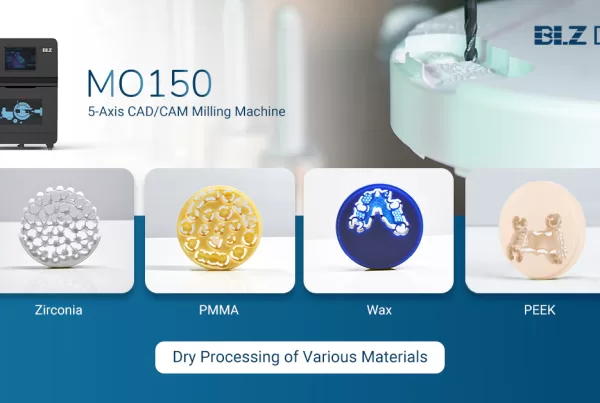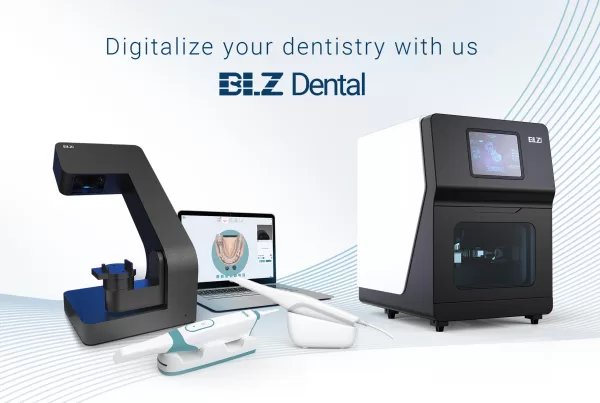Dental Crown is a common treatment of prosthodontics, a type of dental restoration that completely caps or encircles a tooth or dental implant. You may wonder:
Overview of Dental Crown:
What is a Dental Crown?
When do you need a dental crown?
What is the procedure of a dental crown?
Material of Dental Crown
Appropriate Care for Dental Crowns
What is a Dental Crown?
Dental crown is a method for restoring teeth. When the teeth are damaged and difficult to be restored by fillings, different materials can be used to make artificial crowns and put them on the reduced natural crowns. Covering the decayed or broken teeth, dental crown is like a “cap” to protect them from further damage.
When do you need a dental crown?
A dental crown is a common procedure in dentistry. Your teeth may lose their original shape, size, color, or strength in the process of using, and a dental crown could help restore them. There are some common situations to apply dental crown:
1. After Root Canal Treatment: Root canal treatment refers to the removal of nerves in the root canal and filling with other substances to prevent inflammation from deepening. However, when the dental nerve responsible for delivering tooth nutrition is removed, the tooth will lose its source of nutrition and becomes fragile. Therefore, dental crowns could play the role of protector. Besides, there are more tooth defects after root canal treatment.
2. Severe wear and cracking of the teeth: When the surface of the tooth is excessively worn or the tooth is cracked, there may be tooth sensitivity or a toothache while eating hard foods, or being stimulated by excitant food like ice cream. In order to protect the teeth from cracking completely, a crown is needed to protect the teeth. In addition, when the teeth are broken due to trauma, the residual root could be reserved with crown treatment if the roots have sufficient length and the periodontal condition is good enough.
3. Bad tooth shape and color: If it is severe endogenous tooth discoloration, such as tetracycline teeth, dental fluorosis, etc., the tooth defect is relatively large, or there are dental deformities, the dental crown should be considered to restore the teeth.
What is the procedure of dental crown?
There are traditional ways and digital ways to get your dental crown. In the traditional way, you need at least two visits to the dentist. In your first visit, the dentist will examine the dental situation, particularly the roots and surrounding bone of problem teeth by taking X-Rays images of the tooth to decide if you need an extra root canal treatment or you’re well prepared to accept an artificial crown. Before installing a dental crown, your tooth needs to be reshaped by filling up when there’s a large area missing or by grinding off to accept an artificial crown, this procedure will guarantee a perfect adaption of your new crown.
And then the dentist will take dental impressions, they put the materials like alginate or silicone rubber into your mouth in order to copy the teeth model, and pour plaster to get a tooth model. The tooth model will be sent to the factory where your crown is made. You could get your new crown in your second visit. During this procedure, you’ll suffer a lot and need to wait a long time. Therefore, the dentist has to provide you a temporary crown in your waiting period to protect your tooth.
If you have the chance to enter a fully digital dental clinic, you may get your new crown on the same day. With the help of BLZ intraoral scanner INO 100, dentists could obtain a digital 3D model within seconds without stuffing extra material in your month. The model could be designed by CAD/CAM system. If the clinic is equipped with a 3D printer, your crown will be produced in one hour. The digital procedure could provide not only more comforts to patients but also a crown more accurately which fit perfectly the tooth.
Material of Dental Crown
- There are many factors to consider in the choice of crown material, such as strength of material, the appearance of crown, the position of tooth, price etc. The materials used to make dental crowns are roughly divided into three categories: metal, porcelain-fused-to-metal and all-ceramic or all-porcelain.
- Metal: There are two main types of metal crowns, stainless steel, and gold alloy. Metal material has usually enough strength for chewing and biting. Nowadays, stainless steel metal crowns are less used, because the hardness brings discomfort in daily use and stainless steel may stain and darken the gums. Besides, you’re not allowed to accept head nuclear magnetic inspection if you’re wearing it. Gold alloy metal crowns are still in use today. But the metallic crown is more suitable for invisible posterior teeth.
- Metal Porcelain: In order to have a crown durable and beautiful, metal porcelain crowns have appeared. It uses metal as the inner layer of the crown, and then using dental porcelain materials to sinter on the metal surface at high temperature. However, when the external force is too large, the porcelain on the surface may fall off.
- All-Ceramic or all-Porcelain: It refers to a dental crown made entirely of porcelain materials and does not contain metal. In order to ensure sufficient strength, this porcelain is generally made of zirconia. The color of this kind of crown could match to the original teeth, and won’t change easily, which brings a better aesthetic effect. The surrounding gums won’t be stained even after servicing a long time. Besides, it won’t be broken easily which guarantees long-term use. This is the dental crown material that is more widely used.
Appropriate Care for Dental Crowns
The precautions after crown restoration mainly include the following aspects:
- Pay attention to oral hygiene. In addition to brushing your teeth normally, you need to use dental floss and interdental brush to clean the teeth, so that the teeth are not prone to other problems such as dental caries.
- The crown materials are mostly porcelain or all-ceramic materials, which have a certain degree of brittleness. Therefore, try to avoid sudden force when eating, like avoid chewing hard foods such as nuts and crabs.
- While eating, you could begin with soft food, and transit gradually to normal food and then hard food, so that the teeth could adapt.
- Maintain a regular review so that your doctor could find earlier your oral problem and start earlier the treatment. Of course, when you have a bite pain, discomfort, or gum swelling, you must consult a doctor in time, and deal with it as soon as possible.
References
[1] Smith, Yolanda. (2019, February 26). Dental Crown / Tooth Cap. News-Medical. Retrieved on August 19, 2021.

